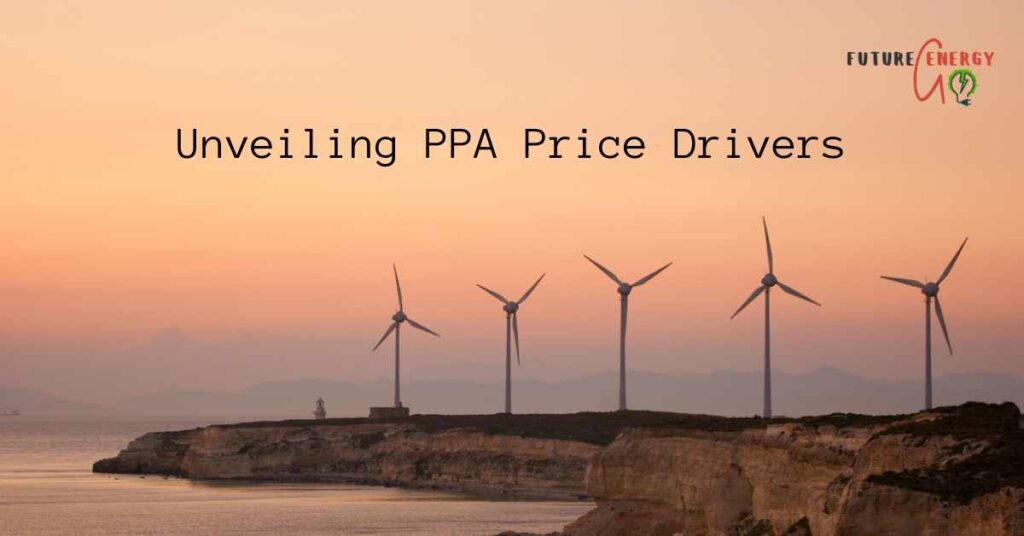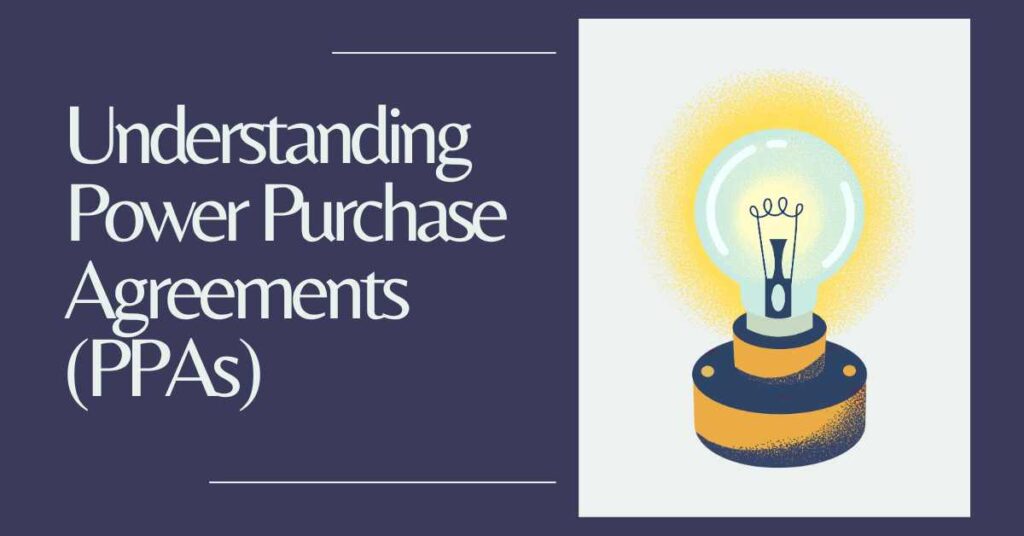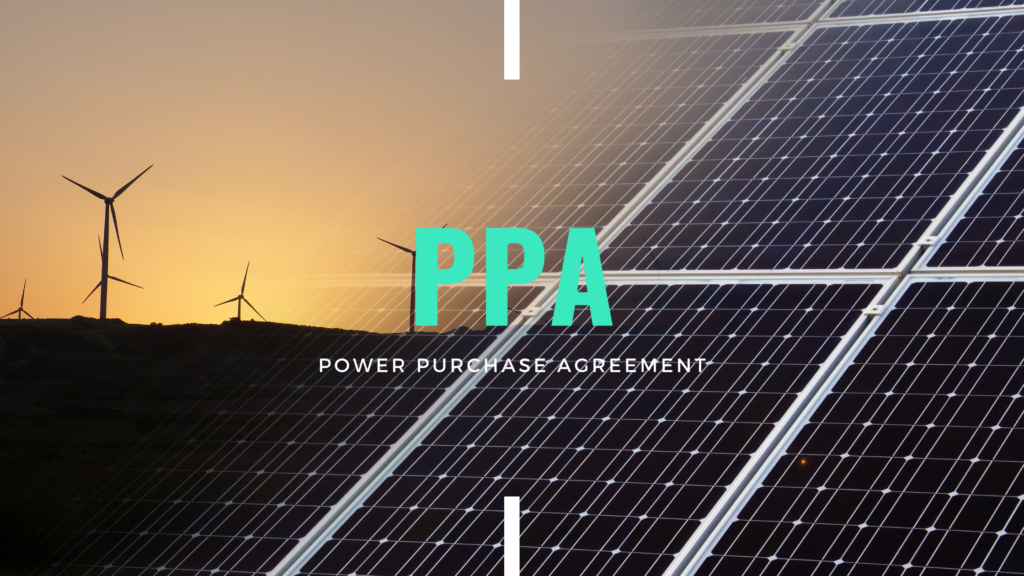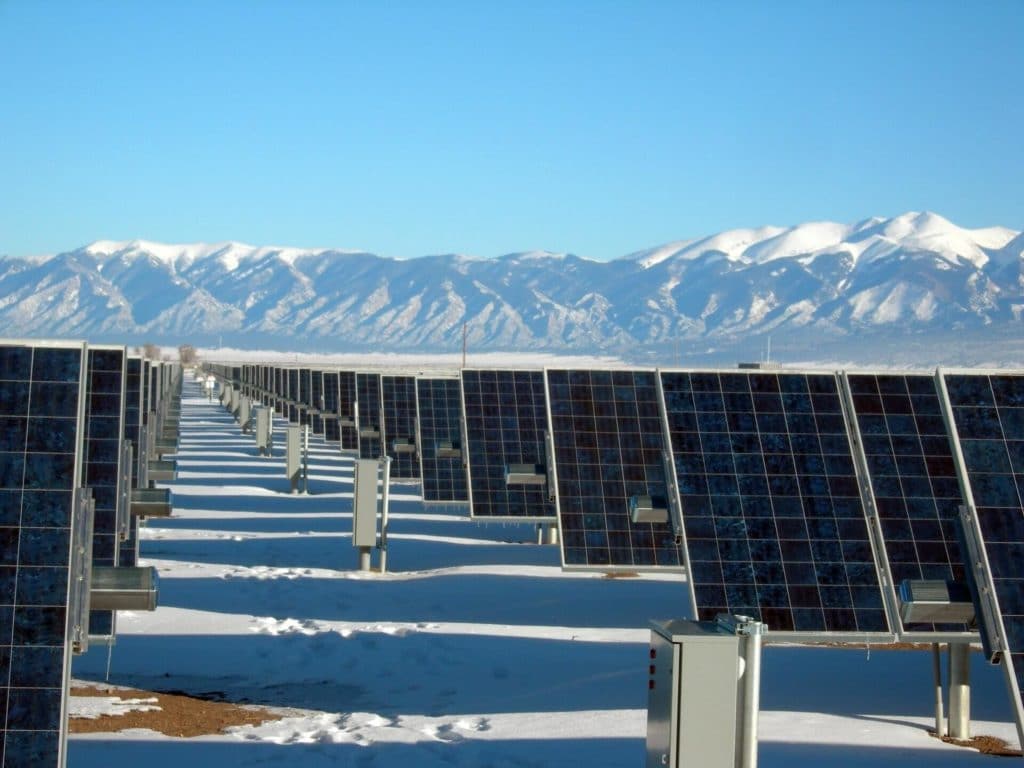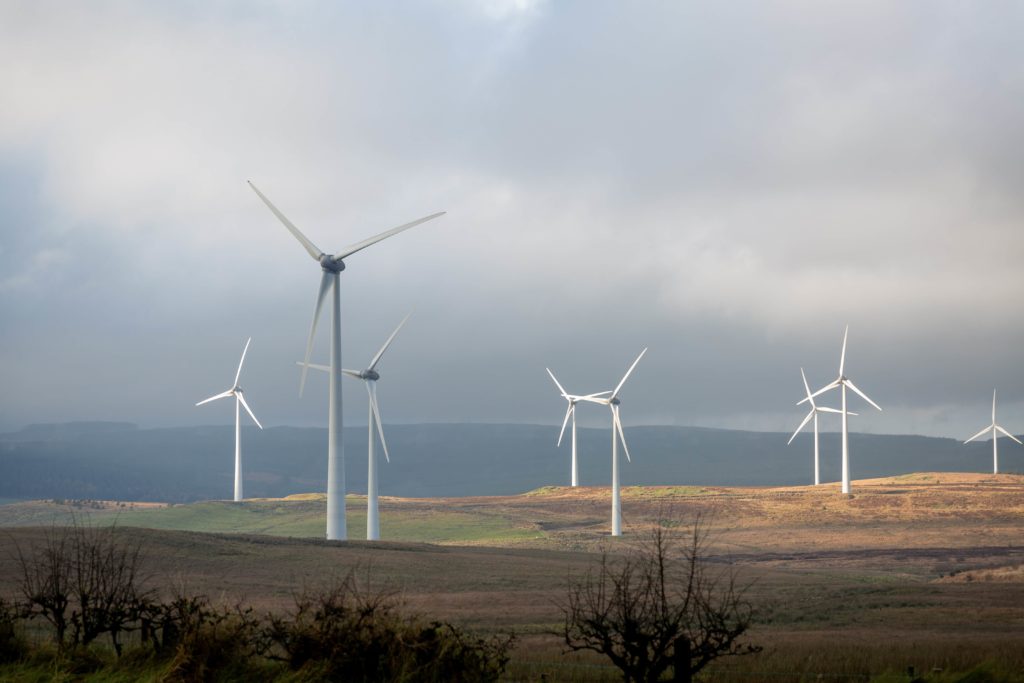Table of Contents
Introduction to PPA Price Drivers in Renewable Energy Procurement
In the dynamic world of renewable energy procurement, understanding factors that can influence Power Purchase Agreement (PPA) pricing is the key to making informed decisions and driving sustainability initiatives forward.
In this article, we will unveil the critical PPA price drivers, shedding some light on the costs associated with renewable energy contracts. You will gain invaluable insights into the often complex and multifaceted world of PPA pricing. Our mission is to empower you with the knowledge to make informed choices and navigate the renewable energy procurement landscape more effectively.
PPA Start Date
PPA Start Date is one of the first factors to determine PPA price levels as the power futures are traded in backwardation.
What is Backwardation in Simple Terms?
Backwardation, in the context of commodity markets, is when the future power prices are lower than the current prices. This means that buying power for next calendar year would be more expensive than contracting power supply for the future data several years from now.
Why is it important?
When you sign a PPA, you’re essentially locking in a price for the electricity you will receive from a renewable energy project. However, this price isn’t just a random number; it’s heavily influenced by the market conditions and, more importantly, the expected future prices of electricity.
If your PPA start date is later, say, a few years down the road, and the market is currently experiencing backwardation, it means that electricity prices are expected to decrease in the future. Therefore, the PPA you sign for a later start date would likely have a lower price compared to one with an earlier start date.
Therefore, the PPA start date becomes a strategic decision. By opting for a later start date when the market is in backwardation, you can potentially secure a more favourable price for your renewable energy.
Cost of Capital and Credit
This factor encompasses the expense associated with the cost of capital and credit, which includes the interest rates and creditworthiness of the parties involved.
As inflation rises, the cost of borrowed capital can increase, directly affecting the overall PPA pricing since renewable projects are often financed with a significant amount of debt with a leverage ratio of about 1:5.
Moreover, inflation isn’t the only element at play. Labor, land costs and equipment to build a solar or wind farm also come into the equation. An increase in these cost items can lead to higher initial investments, subsequently influencing PPA pricing.
What Is LCOE?
LCOE is a metric used to calculate the per-unit cost of generating electricity over the entire lifetime of a power plant or energy project. It takes into account all the costs involved, including initial capital expenditures, operational and maintenance costs, fuel costs (if applicable), and the projected lifespan of the facility. The result is expressed in euro or dollar per megawatt-hour (MWh) of electricity produced. In essence, LCOE is an indicator for assessing the efficiency of capital investments in energy projects.
Also, starting January 2026, the EU’s Carbon Border Adjustment Mechanism (CBAM) regulation is set to tighten imported goods, such as cement, steel, iron and aluminium. Designed to curb carbon leakage and promote a level playing field for European industries, CBAM could have downstream effects on the PPA market. While its primary aim is to foster environmental responsibility, it can potentially affect the cost dynamics of renewable energy projects.
In summary, the cost of capital and credit is a significant factor in PPA pricing, influenced by inflation, labour and land costs. As we move into a future where the CBAM regulation takes center stage, the PPA market may experience additional constraints on import costs, adding an extra layer of complexity to the renewable energy landscape.
Competition and Government Support Schemes
In markets where competition among renewable energy projects is high, there is typically a limited number of viable projects available for potential offtakers (organizations or buyers seeking renewable energy). As a result, the law of supply and demand comes into play. Hence, in markets with limited CPPA asset supply, renewable energy project developers have the upper hand when it comes to pricing their electricity, as potential buyers are vying for access to a limited pool of projects.
Also, the interconnect between competition and government support schemes, such as the Contracts for Difference (CfD) scheme in the UK, plays a pivotal role in shaping the pricing of Power Purchase Agreements (PPAs).
Government support schemes, like the CfD scheme in the UK, are designed to incentivize and promote the growth of renewable energy. They offer long-term contracts that guarantee a fixed price for the electricity generated by eligible projects, providing stability and predictability to project developers and investors. These schemes can also serve to reduce the perceived risks associated with renewable energy investments, making them more attractive to both private and institutional investors.
The presence of government support schemes, particularly ones as arttractive as the CfD in the UK, can have a profound impact on PPA pricing. The guaranteed prices provided by these schemes can influence project developers’ appetite for schemes instead of corporate PPAs. Conversely, when support schemes are less robust or absent, project developers may be interested in signing corporate PPAs.
Understanding the competitive landscape and the presence of government support schemes in the PPA market is essential for organizations seeking renewable energy procurement. The level of competition in the market and the strength of government support can significantly impact the rates offered by renewable energy project developers, making these dynamics a crucial consideration for organizations aiming to secure cost-effective and sustainable energy solutions.
A good resource to learn more about Government Support Schemes is here.
Risks Associated with Permitting
The process of permitting for renewable energy projects is a pivotal factor in determining the pricing of Power Purchase Agreements (PPAs). The extent to which these permits have been secured plays a critical role in evaluating project risks and ultimately impacts PPA rates.
De-Risking Through Permitting
In the world of renewable energy, de-risking a project is essential to attract investors and potential offtakers. Projects that have already secured vital permits, such as grid connection, environmental approvals and construction permits, are often considered less risky. These permits signify that the project has passed the necessary regulatory hurdles, reducing uncertainties regarding its development.
The de-risking effect is twofold. First, it provides confidence to investors and lenders, making project financing more accessible and potentially more affordable. Second, it reassures potential offtakers that the project is more likely to proceed as planned, which can result in higher PPA prices. This higher pricing reflects the perceived lower risk of the project, as the permitting process is already advanced.
Grid Connection Permit Delays and Permit Uncertainty
On the flip side, in markets with significant delays in securing grid connection permits and projects lacking essential permits, there’s an increased level of uncertainty. Delayed grid connection permits, such as those experienced in countries like Italy, can lead to agreed timeline disruptions.
In such cases, a lower PPA pricing is expected to reflect this uncertainty and the higher risks associated with permitting delays and the potential for a delayed commercial operation date (COD). To mitigate this risk, PPA agreements may include provisions that protect against delayed PPA COD dates, providing security against unforeseen permitting challenges.
Understanding the permitting landscape is crucial for organizations looking to engage in renewable energy procurement. It not only affects the cost of renewable energy but also impacts the timing and reliability of energy supply. PPA negotiations must carefully consider the risks and de-risking strategies associated with permitting to ensure a balanced and economically viable agreement.
PPA Type: Baseload or Pay-as-produced
The type of Power Purchase Agreement (PPA) structure is a pivotal price driver in the renewable energy sector, with two prominent variations: Baseload PPAs and Pay-as-Produced PPAs. These structures significantly impact pricing, and understanding the differences and their advantages and disadvantages is crucial when considering renewable energy procurement.
Baseload PPAs
A Baseload PPA is designed to provide a consistent, steady supply of electricity over a specified period, typically 24/7. In this structure, the PPA price is fixed and remains constant throughout the agreement term, regardless of variations in energy production.
Advantages
- Price Stability: Baseload PPAs offer price predictability, making them a suitable choice for organizations looking to lock in long-term energy costs without exposure to market fluctuations.
- Reliability: Baseload PPAs ensure a continuous supply of energy, making them ideal for operations requiring constant, uninterrupted power.
Disadvantages
- Limited Flexibility: Baseload PPAs may not be as flexible in adapting to changing energy needs or seasonality.
Pay-as-Produced PPAs
Pay-as-Produced PPAs, on the other hand, are structured to align pricing with the actual energy production of the renewable energy project. In this model, the PPA price is tied to the amount of electricity generated, meaning that electricity volumes produced fluctuate.
Advantages
- Cost Efficiency: Pay-as-Produced PPAs can be more cost-effective when energy production matches actual consumption, as organizations pay only for what they use.
- Flexibility: These PPAs offer greater adaptability to changing energy needs and seasonal variations, allowing for more efficient use of renewable energy.
Disadvantages:
- Price Volatility: The pricing of Pay-as-Produced PPAs can be subject to fluctuations, making it harder to predict and budget for energy expenses.
- Take-or-Pay: In periods of overproduction, where the project generates more energy than required, organisations may still be obligated to pay for the excess power, leading to unnecessary costs.
The choice between Baseload and Pay-as-Produced PPAs depends on an organization’s specific energy needs, risk tolerance, and financial goals. Baseload PPAs provide price stability but may come at a premium, while Pay-as-Produced PPAs offer flexibility and cost efficiency but come with the trade-off of price volatility and market exposure. In many cases, a blend of both PPA types or innovative hybrid structures can help organizations strike a balance between stability and cost savings in their renewable energy procurement strategies.
You can learn more about different PPA price structures in this article.
Shaping and Balancing Costs
Shaping and balancing costs are essential considerations when it comes to determining the pricing of Power Purchase Agreements (PPAs) in the renewable energy sector. These costs are deeply influenced by the interplay between production and consumption, as well as the mix of technologies, such as wind and solar, in the energy supply. Understanding the dynamics of shaping and balancing costs is also important for making informed decisions in renewable energy procurement.
The Role of Production vs. Consumption
Shaping and balancing costs primarily revolve around the difference between when electricity is produced and when it is consumed. Renewable energy sources like wind and solar are inherently intermittent, meaning they generate electricity based on weather conditions and daylight hours. This intermittency creates a temporal misalignment between production and consumption.
In regions with high solar penetration, this misalignment becomes more pronounced, posing a challenge known as “cannibalization risk.” Cannibalization occurs when there is excessive solar generation during peak sunlight hours, resulting in an oversupply of electricity. During these periods, energy prices tend to drop even to negative territories in some markets, impacting the value of the energy generated.
Technology Mix and Shaping Risks
The technology mix in a region or within a PPA plays a vital role in shaping and balancing costs. Different technologies, such as solar and wind, exhibit distinct generation profiles. Wind energy production may peak at night, while solar energy peaks during the day. By combining these technologies, a more balanced and reliable energy supply can be achieved, reducing the risk of mismatches between production and consumption.
Reducing Shaping Risks and Costs
To mitigate shaping and balancing risks and costs, organizations seeking renewable energy procurement can consider several strategies:
- Technology Alignment: Partnering with energy providers that offer a technology mix that better aligns with a buyer’s consumption patterns can significantly reduce shaping risks. A blend of solar and wind energy, for instance, can help balance energy supply throughout the day.
- Integrated Utilities: Collaborating with integrated electricity utilities and traders that offer advanced balancing services can be an effective way to manage shaping and balancing challenges. These energy suppliers can optimize energy supply and demand, helping to reduce costs associated with temporal mismatches.
- Integration of battery storage: The integration of battery storage technology is a future strategy for mitigating shaping risks in renewable energy procurement. By leveraging energy time-shifting capabilities, enhancing grid stability, and reducing energy costs, organizations can achieve more flexible and cost-efficient renewable energy supply solutions.
In conclusion, shaping and balancing costs are pivotal factors in PPA pricing, influenced by the production-consumption differential and the technology mix used for energy supply. In markets with high solar penetration, addressing cannibalization risk becomes essential. By aligning technology choices with consumption patterns and partnering with integrated energy providers, organizations can competitively navigate the world of renewable energy procurement while minimizing the impact of shaping and balancing costs.
Looking into the future, there is a growing expectation among market analysts that shaping and balancing costs in the renewable energy sector will likely experience a downward trajectory. Several key factors contribute to this optimistic outlook:
- Increased Interconnection Capacity: As grid infrastructure continues to advance and expand, interconnection capacity is expected to increase. This enhancement will enable a more efficient and seamless flow of electricity, reducing the temporal mismatches between renewable energy production and consumption. Improved interconnection can contribute to better grid balancing, lowering the need for expensive shaping measures.
- Affordable Battery Storage Technologies: The ongoing development and maturation of battery storage technologies drive affordability and scalability. As the cost of energy storage systems decreases, more businesses and renewable energy projects can economically implement energy time-shifting solutions, further aligning supply with demand.
- Technological Advancements: Technological advancements in renewable energy generation, forecasting, and grid management are continuously improving. These innovations allow for better prediction and control of renewable energy output, reducing the reliance on expensive balancing measures.
- Evolving Market Dynamics: The renewable energy market is becoming increasingly competitive, fostering innovation and efficiency. Market forces are encouraging the optimization of renewable energy supply and grid management, resulting in more cost-effective shaping and balancing strategies.
While challenges remain, the combination of these factors suggests a promising long future for shaping and balancing cost reduction.
Efficiency and Technology of the Equipment Used
The efficiency and technology of the equipment used in renewable energy projects are pivotal drivers in PPA pricing. More advanced and efficient equipment, such as high-performance solar panels and cutting-edge wind turbines, can yield a greater amount of energy within a given timeframe. This boost in energy output enhances the overall project efficiency, making the energy generated more cost-effective. When considering renewable energy procurement, organizations must carefully evaluate the equipment being utilized in the projects at a later stage of negotiations.
New or Existing Project
The distinction between new or existing projects is a critical factor in PPA pricing dynamics. Operational or Existing PPAs are often priced at the forward market curve, reflecting current market conditions and supply-demand dynamics. In contrast, new-built projects introduce a price consideration linked to the investment costs incurred in developing the project.
This distinction underscores the importance of timing and risk assessment in PPA negotiations. Operational projects offer a degree of market predictability, while new-built projects entail the risk of development and construction, which can impact pricing. Understanding the trade-offs and risk profiles associated with new or existing projects is essential in navigating the renewable energy procurement landscape and securing cost-effective, sustainable energy solutions.
REGO/GOO cost
The cost of Renewable Energy Guarantees of Origin (REGO) or Guarantees of Origin (GOO) certificates is a significant driver in PPA pricing. These certificates serve as proof that a specific amount of electricity has been generated from renewable sources, helping organizations meet sustainability and compliance goals. The cost of REGO/GOO certificates can impact the overall PPA price, which includes both the cost of power and the certificates.
Over the past few years, the REGO/GOO market has experienced substantial growth. The cost of these certificates has risen from less than 1 EUR/MWh to about 10 EUR/MWh in many markets. In some countries like the UK, the cost of REGO certificates recently surged to 20-30 £/MWh.
This notable increase in certificate prices reflects the growing demand for renewable energy and the desire of organizations to demonstrate their commitment to renewable energy sources. As a result, since the cost of renewable energy certificates is directly interconnected with power price, the overall PPA price can be impacted (PPA Price = Power + REGO/GOO).
If you are interested to learn more about the rising price of GOs in 2023, you can read this article.
PPA CPI Indexation
One of the notable recent trends in the Power Purchase Agreement (PPA) market is the emergence of inflation-linked PPA pricing mechanisms.
These mechanisms tie the PPA price to the Consumer Price Index (CPI), helping to adjust the electricity rates in line with the changing economic landscape. For organizations considering such PPAs, it is crucial to pay close attention to the inclusion of a capping mechanism on the inflation level. This capping mechanism allows organizations to maintain a level of control over their PPA pricing, preventing unexpected or excessive price escalations.
PPA Contract Tenor
The duration of a Power Purchase Agreement (PPA), often referred to as the contract tenor, is a significant driver in PPA pricing. In most cases, a longer PPA is expected to yield a more competitive price. This expectation is closely linked to the concept of backwardation, where future energy prices are anticipated to be lower than current prices. Thus, a 20-year PPA is typically expected to be more price-competitive than a 10-year PPA.
PPA Volume Offtake %
The percentage of PPA volume offtake is another driver in PPA pricing negotiations. Corporates that commit to offtake the entire output of a renewable energy project typically hold stronger negotiation leverage compared to those with a minority share of the PPA volume.
A more substantial offtake percentage is often attractive to PPA developers and suppliers because it reduces transactional complexities and operational uncertainties. It streamlines the process, enhances project bankability, and can lead to more competitive pricing agreements.
In an industry where time is often of the essence, this efficiency in PPA volume offtake can be a win-win, aligning the interests of both energy buyers and project developers in the transition to sustainable energy future.
Markets of High Carbon Tax/Price Destinations
Markets with high carbon intensity or substantial carbon tax policies are emerging as powerful drivers of PPA pricing. In these markets, the imperative to reduce greenhouse gas emissions and combat climate change is often met with an increased demand for renewable energy. Corporates operating in regions with stringent carbon regulations may prioritize these markets for renewable energy procurement.
Energy Market Liberalization/Deregulation Level
The degree of energy market liberalization or deregulation is a paramount factor impacting Power Purchase Agreement (PPA) pricing. In monopolistic electricity markets, where a single state utility holds a dominant market share and controls pricing, PPAs may be subject to a premium.
Conversely, in markets with a high level of liberalization and competition, PPA pricing is often more competitive. Deregulated markets foster innovation, encourage market competition, and empower energy buyers to explore diverse PPA options.
Counterparty Credit Risk
In a PPA, the counterparty, often the energy project developer, takes on the responsibility of delivering electricity over an extended period, which can span decades. This presents a financial risk for the energy buyer, as they rely on the counterparty’s ability to fulfil the contract. In essence, the buyer is lending capital to the developer with the expectation of future energy deliveries. Larger corporates typically have a more favourable position in negotiating PPAs, as their financial stability and creditworthiness are stronger, allowing them to secure better terms and pricing.
As a result, smaller energy consumers often face challenges in obtaining competitive PPA deals due to their perceived higher credit risk. This is where volume aggregation services have gained prominence. These services enable smaller consumers to pool their demand and collectively negotiate more favourable PPAs, leveraging the combined creditworthiness of multiple participants. The rise of volume aggregation services reflects the growing recognition of the importance of equitable access to cost-effective renewable energy procurement, ensuring that organizations of all sizes can participate in the transition to sustainable energy sources.
Approaching Corporate Renewable Energy Targets 2025-2030-2040-2050
As corporate sustainability targets are approaching, proactive market engagement and accelerated Power Purchase Agreement (PPA) activities usually intensify. This may have a direct impact on PPA market prices. Therefore, corporates should have no reason to wait until 2025 or 2030 to sign their PPA agreements.
By going PPA agreements sooner rather than later, businesses can expedite their transition to cleaner energy sources, reducing carbon footprints and contributing to a more sustainable future.
If you found this article about Unveiling PPA Price Drivers in Renewable Energy Procurement insightful or have any specific questions, topics, or areas of interest that you’d like to explore further, you can leave your comments below.
Your feedback is valuable to us as it helps shape future content to better serve your information needs in the complex world of Power Purchase Agreements and renewable energy procurement. Thank you for your engagement.
Curious to learn more about PPAs? Our guide offers a concise roadmap to navigate Power Purchase Agreements (PPAs). Learn more here.
What is PPA?
A Power Purchase Agreement (PPA) is a legally binding contract between two parties, typically a renewable energy developer and an electricity consumer, that outlines the terms and conditions for the sale and purchase of electricity. In a PPA, the energy developer agrees to generate and deliver a specified quantity of electricity to the consumer over an agreed-upon period, usually 10 years or longer.
What is Backwardation?
Backwardation, in the context of commodity markets, is when the future power prices are lower than the current prices. This means that buying power for next calendar year would be more expensive than contracting power supply for the future data several years from now.
What Is LCOE?
LCOE is a metric used to calculate the per-unit cost of generating electricity over the entire lifetime of a power plant or energy project. It takes into account all the costs involved, including initial capital expenditures, operational and maintenance costs, fuel costs (if applicable), and the projected lifespan of the facility. The result is expressed in euro or dollar per megawatt-hour (MWh) of electricity produced. In essence, LCOE is an indicator for assessing the efficiency of capital investments in energy projects.


